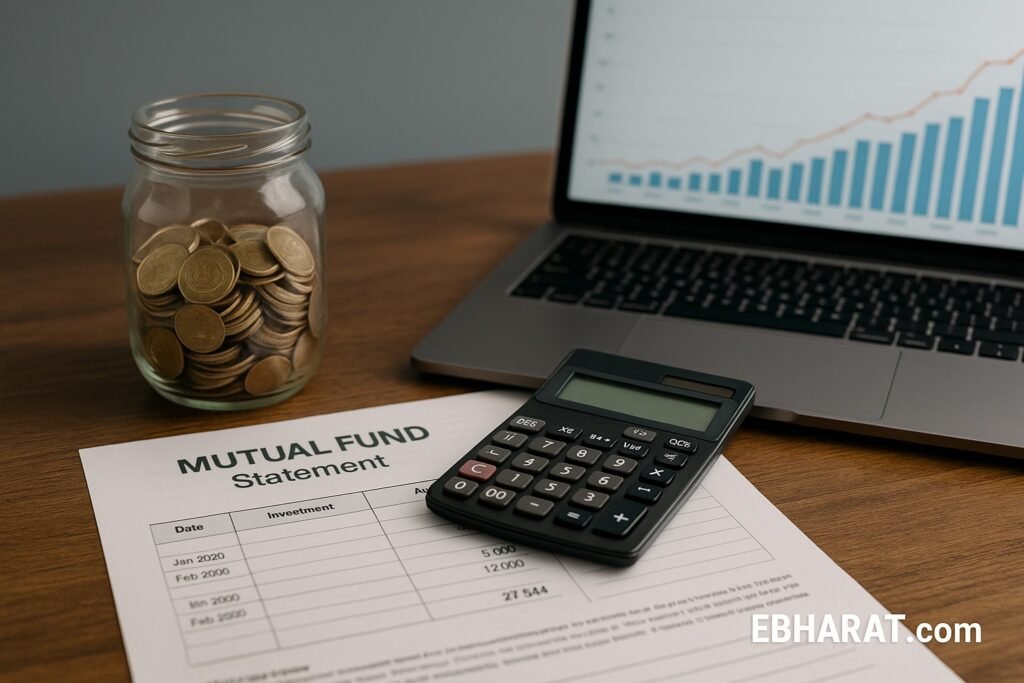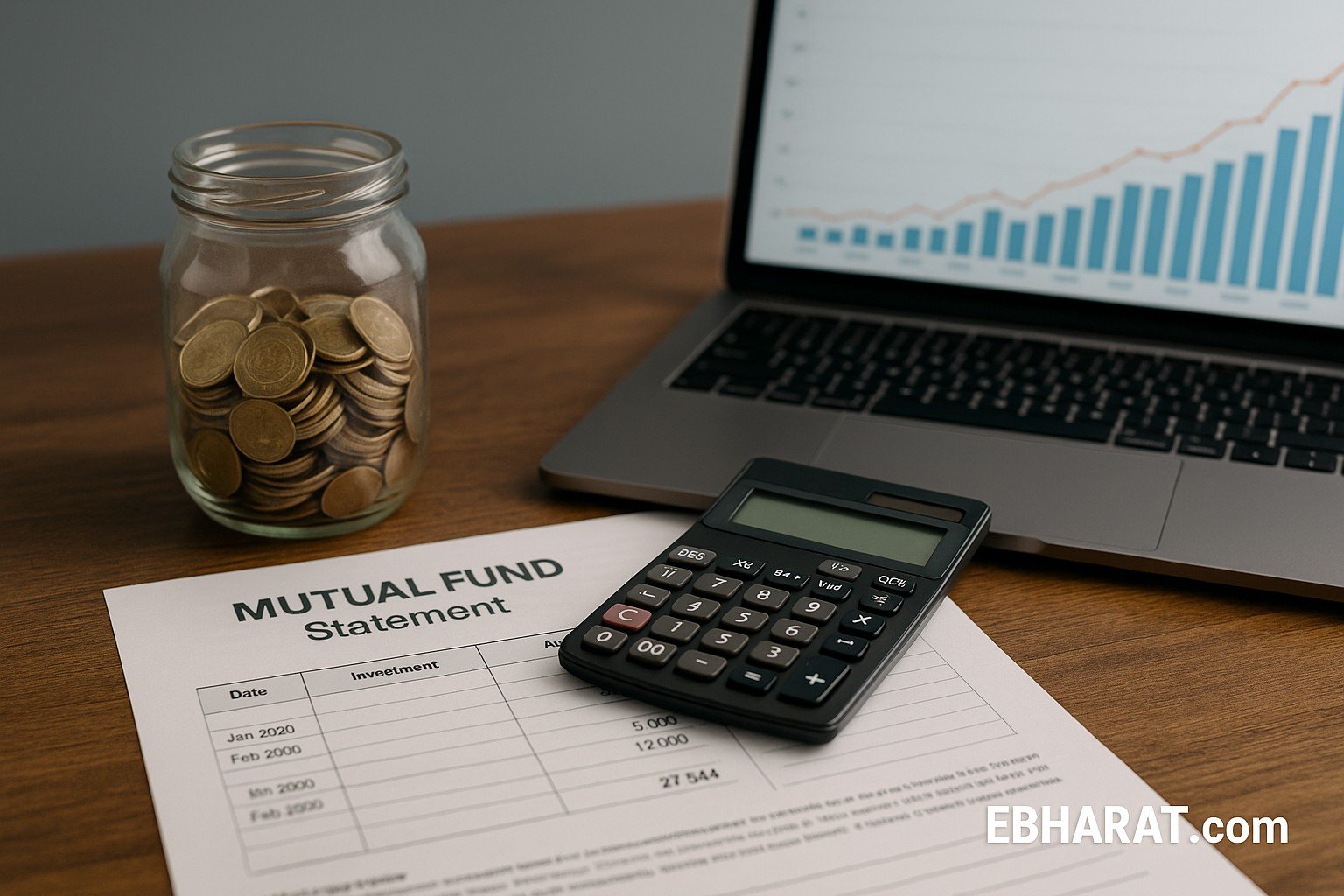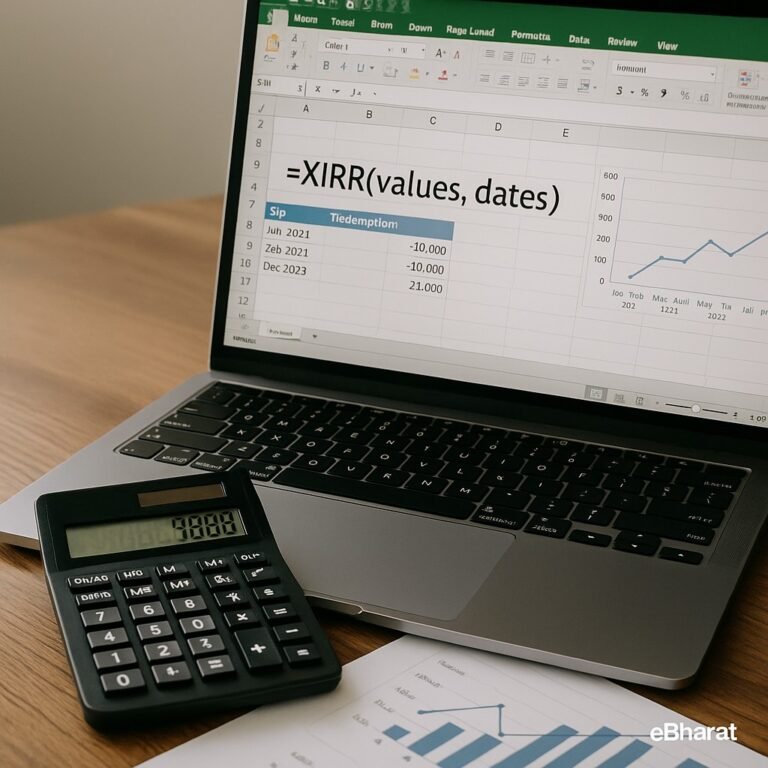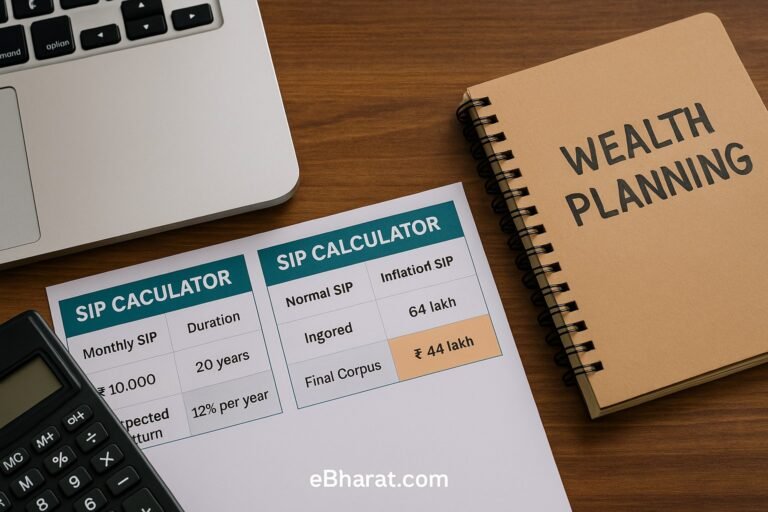
Many Indian investors prefer lumpsum investing in mutual funds, stocks, or bonds instead of monthly SIPs. But figuring out how much your one-time investment will grow over time isn’t always easy. That’s where a Lumpsum Return Calculator helps. It shows the future value of your investment based on the amount, expected return, and investment period.
What is a Lumpsum Return Calculator?
A lumpsum calculator is a simple online tool that estimates how much your one-time investment will be worth in the future.
You just need to enter:
- Investment amount (for example, ₹5,00,000)
- Expected annual return rate (say, 12%)
- Investment period (like 15 years)
The calculator shows the maturity value of your investment at the end of the chosen period.
How Does It Work?
The formula used is:
Future Value (FV) = P × (1 + r/100)^t
Where:
- P = Investment amount
- r = Expected rate of return per year
- t = Time in years
Example: ₹5,00,000 invested for 15 years at 12% return becomes nearly ₹27.5 lakh.
Lumpsum vs SIP
| Feature | Lumpsum Investment | SIP Investment |
|---|---|---|
| Mode | One-time investment | Monthly installments |
| Best For | Investors with surplus funds | Salaried investors with steady income |
| Risk | Higher if market falls right after entry | Lower, as money is spread over time |
| Returns | Can be higher in bull markets | More stable, reduces volatility risk |
Both methods are useful — the choice depends on your risk appetite and cash availability.
Why Use a Lumpsum Calculator?
- Quick Estimates: See how much your money can grow.
- Goal Planning: Helps plan for retirement, education, or buying a house.
- Comparison Tool: Compare different return rates and time periods.
- Better Decisions: Decide whether to invest in lumpsum or spread it via SIP.
Things to Keep in Mind
- Returns are not guaranteed — they depend on market performance.
- Long-term investments usually give better results in equity funds.
- Use inflation-adjusted calculators to see the real value of your returns.
A Lumpsum Return Calculator is the easiest way to see how your money will grow with compounding. Whether you’re investing in mutual funds, bonds, or stocks, this tool helps you set realistic expectations and make smarter financial decisions.












